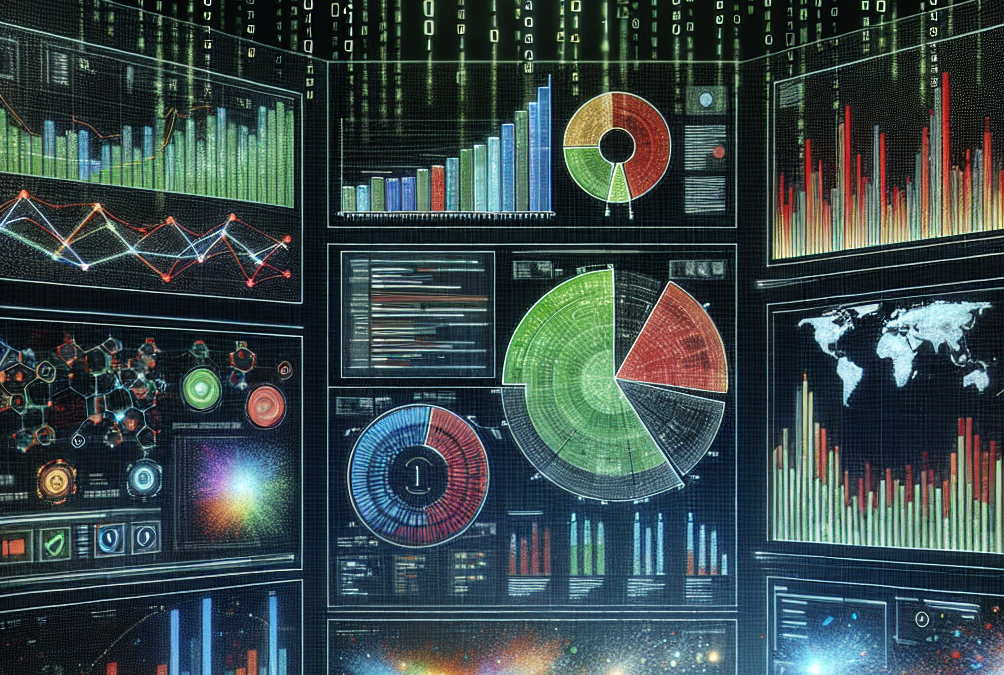Optimization AI Data Visualization
In today’s data-driven world, businesses are constantly seeking ways to optimize their operations and gain a competitive edge. One of the most powerful tools at their disposal is artificial intelligence (AI), which can analyze vast amounts of data to uncover valuable insights and make informed decisions. However, the sheer volume of data that AI systems generate can be overwhelming, making it difficult for businesses to extract meaningful information from it. This is where data visualization comes in.
What is Data Visualization?
Data visualization is the graphical representation of data to help businesses understand complex information quickly and easily. By transforming raw data into visual displays such as charts, graphs, and dashboards, businesses can identify patterns, trends, and outliers that may not be apparent in text-based reports. This enables them to make data-driven decisions with confidence and clarity.
Data visualization allows businesses to:
- Identify patterns and trends in data quickly
- Uncover outliers that may be missed in text-based reports
- Make informed decisions based on visual insights
The Role of AI in Data Visualization
AI plays a crucial role in data visualization by automating the process of analyzing and interpreting data. AI algorithms can sift through massive datasets in real-time, identifying relevant information and presenting it in a visually appealing format. This not only saves businesses time and resources but also allows them to uncover insights that may have otherwise gone unnoticed.
AI in data visualization offers the following advantages:
- Real-time analysis of massive datasets
- Presentation of data in visually appealing formats
- Uncovering insights that may be overlooked
read about Optimization AI data natural language processing
Benefits of Optimization AI Data Visualization
There are several benefits to leveraging optimization AI data visualization in business operations, including:
- Improved Decision-Making: Visualizing complex data helps in identifying trends that inform strategic decisions.
- Enhanced Data Accuracy: AI algorithms clean and standardize data, reducing errors and ensuring accuracy.
- Increased Efficiency: Automation through AI data visualization tools streamlines processes and saves time.
- Better Communication: Visual representations of data are easier to understand and share with stakeholders.
- Competitive Advantage: Leveraging AI data visualization helps businesses stay ahead of the competition and drive innovation.
Best Practices for Optimization AI Data Visualization
To effectively harness the power of AI data visualization for optimization, businesses should follow these best practices:
- Identify Key Metrics: Determine the most important KPIs and metrics aligned with business goals.
- Choose the Right Tools: Select user-friendly, scalable AI data visualization tools.
- Ensure Data Quality: Clean and standardize data for accuracy and reliability.
- Create Interactive Dashboards: Build dashboards for real-time exploration of data.
- Train Employees: Provide training on interpreting and using AI data visualization tools.
- Monitor Performance: Regularly evaluate the performance of AI data visualization tools.
Case Studies
Several businesses have successfully leveraged optimization AI data visualization to achieve significant results. For example, a retail company used AI-powered dashboards to analyze sales data and identify underperforming products, leading to a 20% increase in revenue. Another company in the healthcare sector used AI algorithms to visualize patient data and improve treatment outcomes, resulting in a 15% reduction in hospital readmissions.
Conclusion
In conclusion, optimization AI data visualization is a powerful tool that can help businesses unlock the full potential of their data. By leveraging AI algorithms to analyze and interpret data, businesses can gain valuable insights, make informed decisions, and drive innovation in their industry. By following best practices and learning from successful case studies, businesses can effectively harness the power of AI data visualization to optimize their operations and gain a competitive edge.
Please note that this content is for illustrative purposes only and may not reflect actual SEO content.
FAQ
- What is data visualization and how does it help businesses?
Data visualization is the graphical representation of data to help businesses understand complex information quickly and easily. By transforming raw data into visual displays such as charts, graphs, and dashboards, businesses can identify patterns, trends, and outliers that may not be apparent in text-based reports.
- How does AI contribute to data visualization?
AI plays a crucial role in data visualization by automating the process of analyzing and interpreting data. AI algorithms can sift through massive datasets in real-time, identifying relevant information and presenting it in a visually appealing format.
- What are the benefits of leveraging optimization AI data visualization in business operations?
Some benefits include improved decision-making, enhanced data accuracy, increased efficiency, better communication, and gaining a competitive advantage in the industry.
- What are the best practices for businesses to effectively utilize AI data visualization for optimization?
Businesses should identify key metrics, choose the appropriate visualization tools, ensure data accuracy, and regularly evaluate and adjust their visualization strategies to optimize results.
